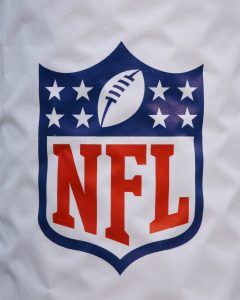Friday afternoon’s unveiling of the 2024 salary cap brings clarity to the franchise tag scene. Already in this year’s window to apply tags, teams now know officially what it will cost to do so.
This marks the 32nd offseason in which NFL teams could use franchise or transition tags, a player-retention tool brought on along with the emergence of full-fledged free agency in 1993. Teams can use either the franchise or transition tag during an offseason, but not both. While Xavier McKinney has already come up as a transition tag candidate, only four players have been slapped with that designation over the past 10 years. Handfuls of players are franchise-tagged each year, however.
A number of candidates are on the radar to be tagged, though no team has designated a franchise player yet this year. Here are the 2024 non-exclusive tag numbers by position, according to NFL.com’s Tom Pelissero:
- Quarterback: $38.3MM
- Running back: $11.95MM
- Wide receiver: $21.82MM
- Tight end: $12.69MM
- Offensive line: $20.99MM
- Defensive end: $21.32MM
- Defensive tackle: $22.1MM
- Linebacker: $24MM
- Cornerback: $19.8MM
- Safety: $17.12MM
- Kicker/punter: $5.98MM
This does not apply to all franchise tag candidates. Players who were tagged in 2023 would be tied to a number that comes in 120% north of their 2023 salary. This previously established the tag prices of Saquon Barkley, Josh Jacobs and Tony Pollard. None of those running backs are a lock to be tagged this year, and due to the cap growth, Barkley’s tag figure of barely $12MM is roughly the same as what it will cost a team to tag a running back for the first time this year.
 Chris Jones‘ situation also differs, due to the star Chiefs defensive tackle being tagged in 2020. A Jones tag would cost the Chiefs 120% of his pre-restructure 2023 salary. That number coming in beyond $32MM makes the eight-year veteran prohibitive to tag. Jones’ camp received some good news via the $255.4MM cap reveal, which gives teams more money to spend this offseason.
Chris Jones‘ situation also differs, due to the star Chiefs defensive tackle being tagged in 2020. A Jones tag would cost the Chiefs 120% of his pre-restructure 2023 salary. That number coming in beyond $32MM makes the eight-year veteran prohibitive to tag. Jones’ camp received some good news via the $255.4MM cap reveal, which gives teams more money to spend this offseason.
Only one other player — Lamar Jackson — has been tagged for beyond $30MM. That move cost the Ravens $32.4MM last year; it will now cost teams $38.3MM to tag a quarterback. No QBs are on the radar to be tagged this year, with Friday’s cap reveal all but slamming the door shut on the Buccaneers tagging Baker Mayfield. While teams can enjoy more flexibility in making final preparations for their free agency budgets, tagging players will be a bit costlier than clubs expected.
The exclusive tag, which prevents players from speaking with other teams, is rarely used due to the increased costs and the non-exclusive tag being an effective deterrent at keeping players off the market. The non-exclusive tag mandates a team that signs a player to an unmatched offer sheet send two first-round picks to the player’s previous club. The transition tag, however, entitles a team to no compensation if it fails to match an offer sheet for a player.
Here are the 2024 transition tag numbers:
- Quarterback: $34.37MM
- Running back: $9.77MM
- Wide receiver: $19.77MM
- Tight end: $10.88MM
- Offensive line: $19MM
- Defensive end: $19.1MM
- Defensive tackle: $18.49MM
- Linebacker: $19.97MM
- Cornerback: $17.22MM
- Safety: $13.82MM
- Kicker/punter: $5.43MM